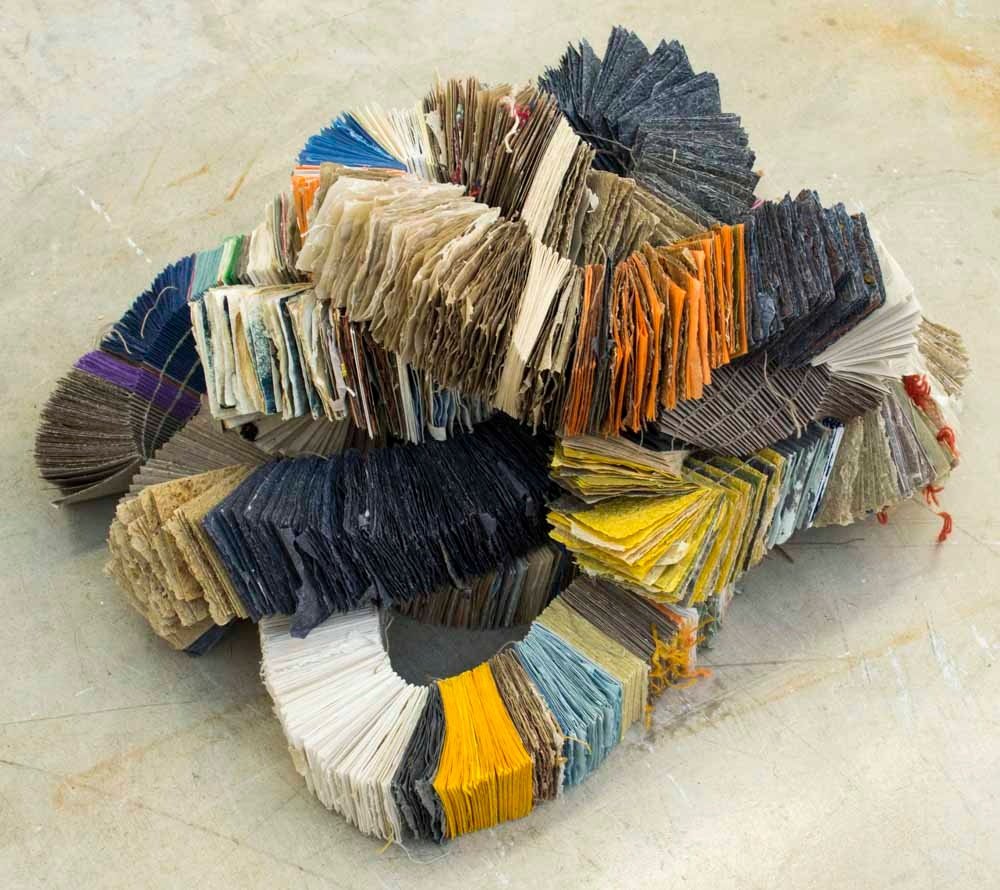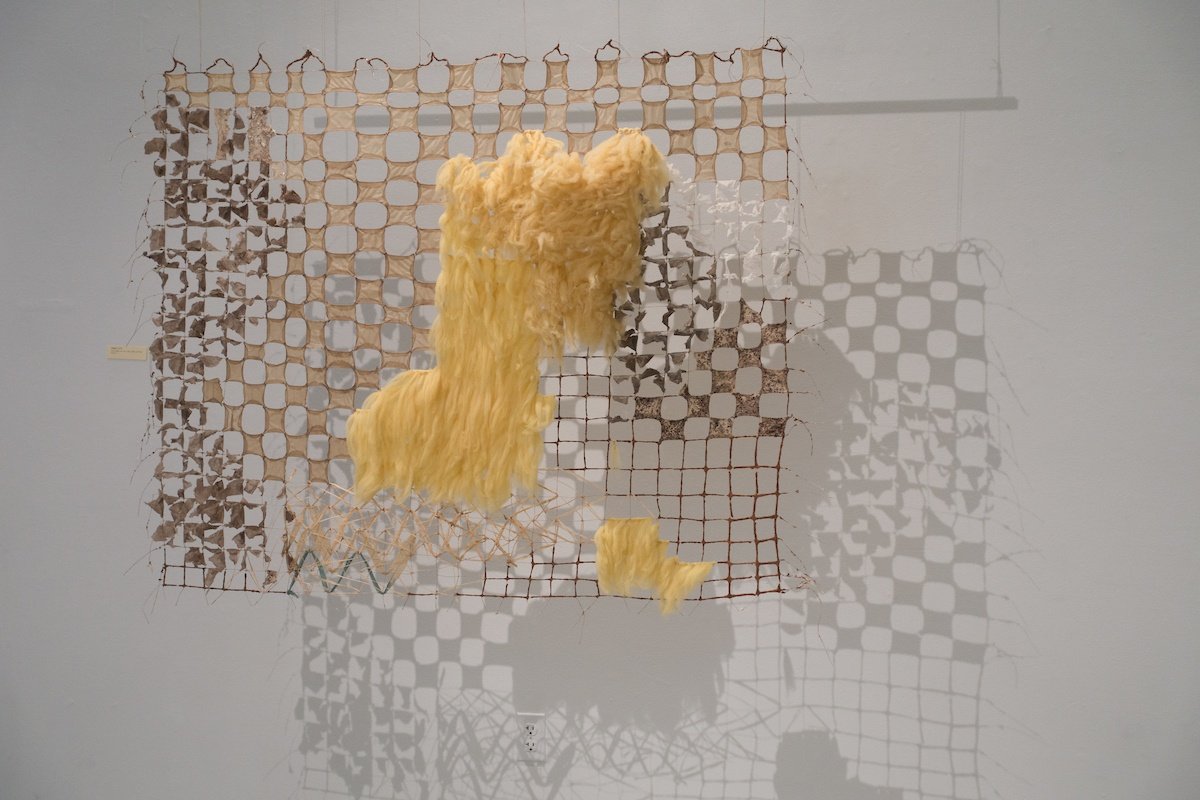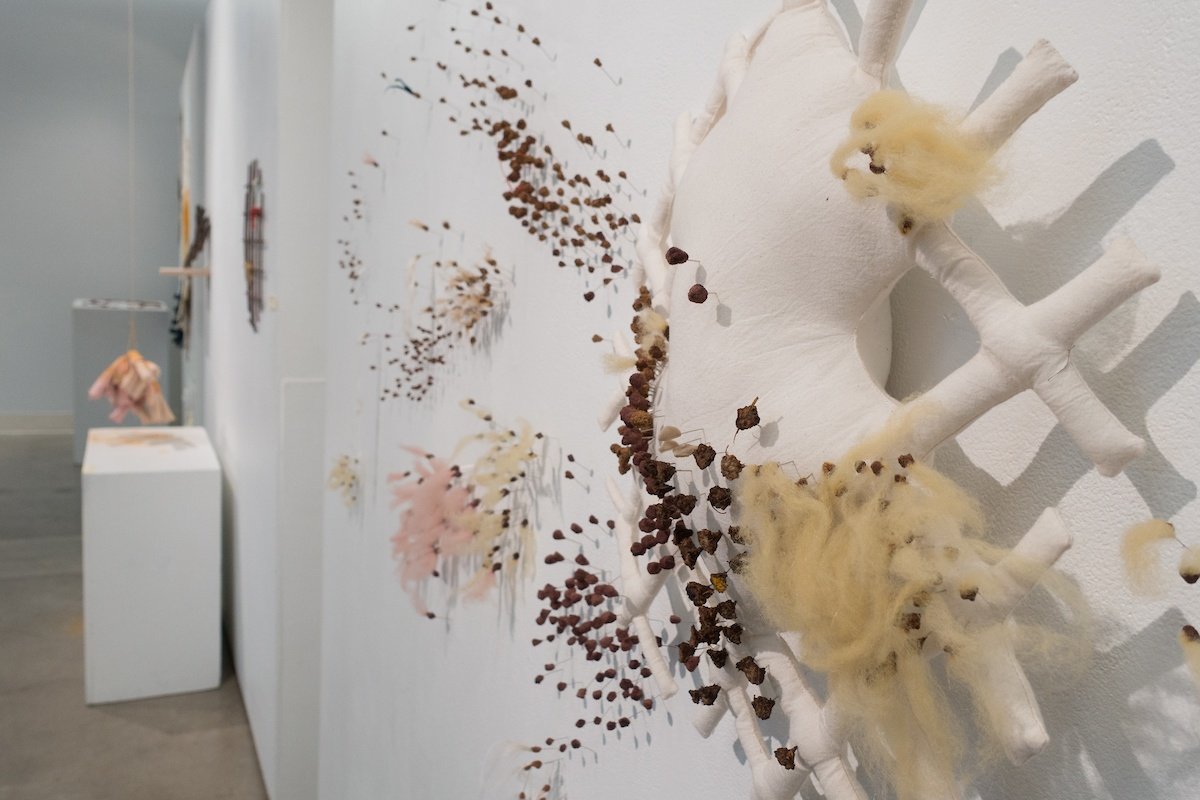Hannah O’Hare Bennett
Domestication Syndrome: Sewn and Sown on the Landscape
April - July 2018
The word artifact has two definitions. One is “an object made by a human being, typically an item of cultural or historical interest,” and the second is “something observed in a scientific investigation or experiment that is not naturally present but occurs as a result of the preparative or investigative procedure.” Both definitions apply to the work shown in this exhibition. The objects are products of Bennett’s investigations and experimentations with materials, in particular paper pulp. It is like clay in that it is malleable, but unlike clay, it shrinks and warps as it dries.
This work is a poetic response to my preoccupation with what it means to be human and to interact with the natural world. In evolutionary biology, there is the concept of the domestication syndrome, the group of traits that wild plants and animals develop over long periods of time as they interact with humans and become tame. Think, for instance, of the difference between a wolf and a dachshund.
Domesticated plants tend to have larger seeds with thinner seed coats, diminished defense mechanisms like bitter-tasting compounds and thorns, indehiscent seed pods, and synchronized germination, all qualities that distinguish them from their wild relatives. Early agriculturalists selected plants that were easy to harvest and pleasant to eat, but part of that bargain meant that the plants were incapable of surviving without the protection and continued propagation humans provided. In turn, human societies have become ever more dependent on domesticated plants and animals. We are bound together in a balance that may be more delicate than we know.
Return to the exhibition archive.






